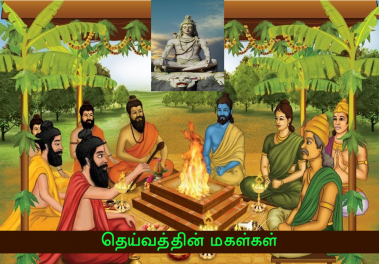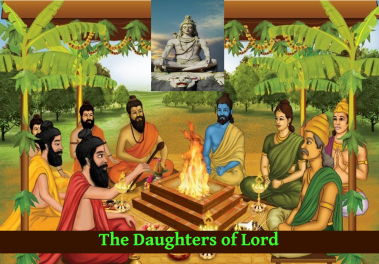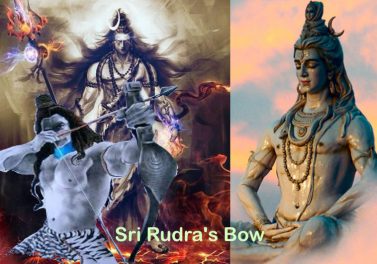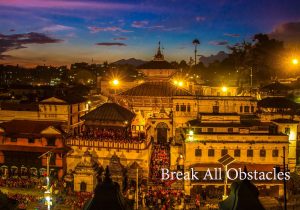Atma Nathan Ayyappan
Conversation With Aiya (11)
When I mentioned that there is Lord Ayyappan Puja as a community event organized by MitraSeva on Sunday to Aiya, my friend, philosopher and guide, he said with a broad smile, ‘Good in deed! Doing something like this in London and give a wider exposure to all, especially to the children is good’.
‘Yes Aiya, The idea is to spread harmony and hope. An opportunity to have Satsangh’, I said, ‘This is also the season in India, is it not, for the devotees to take up the pilgrimage to Sabarimala, the abode of Lord Ayyappan?’.
For some reason, I also added, ‘It has now become so popular…millions of people go there, in spite of the strict discipline to be complied with’.
‘Yes’, said Aiya, ‘ Discipline… That is the very essence of any pilgrimage. Tapas or the penance is very essence of performing a pilgrimage. It is a pursuit towards perfection.’
I was telling the same thing to my children when we discussed about Ayyappan.
Aiya continued.
‘Ayyappan is worshipped as bhutha-nathan or butha-pathi, meaning He is the leader of all gross-elements.’
‘What does it mean?’
‘The elements refer to the building blocks of the universe. The Pancha-bhutas or the 5 great gross elements and their infinite mutations are the building blocks of all manifestations. Ayyappan as the bhutapati is worshipped as the protector of all manifestations. Ayyappan dispels our bhaya, the fear. After all, is not the fear, the root cause of our samsara?’
‘Yes Aiya, The term bhutapati sounds like Ganapati’.
‘Yes, Also Surapati. In Puranas, Lord Subramanya is hailed as Surapati, or the protector of Suras or Devas , the virtuous amongst the manifestations. The term Deva also represents the subtle energies that enliven all manifestations… for example the intelligence principle. Of course, Ganapati, as we all know, is the Lord of all ganas, all gods.’
Aiya continued.
‘It is also very interesting. According to Puranas, Ganapati is the Son of Shakti. Subramanya is the Son of Shiva. But only Ayyappan is the Son of Shiva and Shakti.’
‘Aiya, Is not Ayyappan the Son of Hari and Haran?’
‘Yes. Hari is the Shakti. The all pervasive Shakti, is Vishnu, when viewed as Purusha; He is the root cause of all creation and sustenance. There is a lot to know about these aspects. But for now, the point is Ayyappan, the Harihara-Putran, is the essence of both Parashivam and Parashakti.’
One doubt was in my mind.
‘Aiya, Ayyappan is worshipped on His own. Unlike other forms of gods, He has no escort. According to Sri Rudram, without the benign and graceful Shakti as the escort, worship to Rudra is feared. As Ayyappan is also worshipped on His own, is there….?’
Aiya did not even let me complete my sentence.
‘No! Surely, when we look at all these through the eyes of Vedanta, nothing like this is relevant. In any case, before we do that, please have a deep look at the Ayyappan idol! See how beautiful He is! Our learned seers have given us an enchanting form to Ayyappan for our worship as the Lord in Sabarimala. He carries no weapon of destruction, which is a rarity in the infinite forms of gods that we worship. Ayyappan is absolutely blissful, sitting in a special yogic posture called Veeraasana. Look at Him, His right hand is showing the chin mudra, elucidating the great truth or maha-vakya, tatvamasi, exactly like Lord Dakshinamurti. But look at the left hand. It is so beautifully bent with the tender fingers elegantly poised of a maid, or as the hand of mother Meenakshi. If you understand this, then you will know, in His very form, Ayyappan is Shiva and Shakti, Haran and Hari… our divine father and mother!’.
‘Interesting Aiya! The only thing is the hardship of the rituals and the austerities… it is difficult to follow. Is it not?’
‘Perhaps. But don’t you still see many take up the pursuit! Why do they brave such hardship?’
‘Exactly’, I said, ‘ Perhaps in those days, devotees did not have adequate means of travel and therefore had to get use to the ordeals of difficult pilgrimage, but why now!’
‘Well….. Tapas or penance is prescribed in all great religions. It is the only way for the uninitiated to progress. You see, our life is full of grief. In saying so, I include all the pleasures of life too as those are also potential grief only. Realize that our happiness and despair, as well as the fear are all just the products of the mind. It is the mind that makes us to believe who we are. I am the karta or the doer, I am the bhokta or the enjoyer etc. are the results of our mind.’
‘Aiya, why there is any doubt? I am the doer and I am the enjoyer, I am the sufferer, is that not a fact!’
‘Exactly, that is the misplaced conviction we all have. It is avidya or ignorance; that is what is causing all our problems. The one who thinks I am the doer or enjoyer, is known as the pramata in Vedanta. It is our personality; our personality is the product of our mind. It isolates us from the universality.’
‘So is there another perspective of ourselves?’
‘Yes, only to prepare for that supreme truth, the removal of primary impediments – the adverse influence of the mind is warranted. To reign over our mind, we need to refine our physical, psychological and intellectual faculties.’
‘Are the Ayyappan rituals the means?’ I asked.
‘Yes, Ayyappan devotees are required to take up the penance as prescribed. Right from the early rising from bed, to what to eat, what to wear, what to do and what not to do etc…. Not just for a day or two, but for a mandala or about 41 days. Such perseverance will most definitely help to refine our mind, to bring about the right approach or the sat-bhavana to life’.
‘Wearing specific dress code too?’
‘Yes, wearing a specific type of dress helps to indicate the devotees’ undertaking to others, so that there are no undue inducements to fight for.’
‘What is the need to carry, what is called Irumudi on their head?’
‘You mean the two sacks of items tied-up and carried on their head during the journey?’ Aiya asked.
‘Yes. I know in one bag they carry the offerings to Ayyappan and on the other bag the essential things they need during the travel. May be in those days, they lacked transportation. They needed to walk all the way, day and night. Taking the stuff in two bags and carrying on their heads may be a practical necessity. But why do these things in this day and age?’
‘Well, these are logical questions. But very often we miss the intrinsic beauty of all these rituals, by simply discarding the heritage on the basis of some perceived logic. In Sanatana Dharma, our Hindu tradition, God is not outside of us, but within us. The entire manifestation is the expression of divinity. Living this embodied life is therefore a way of experiencing this divinity. For this reason, our learned and compassionate seers, instead of separating divinity or the god-principle from our mundane practices of life, imbibed into one. Our work is worship. All that we do, we do in the name of god. So if we discard the rituals without understanding the inner meaning or their import, we will lose out’.
Aiya looked at me intensely.
‘Irumudi represents the two bags of karma-palan or the results of our deeds. One bag is full of virtuous deeds and the benefits there in; the other is our misdeeds which are imposing us into the cycle of samsara, the perpetual lack of fulfilment. Our present birth, this current embodiment, is the result of our karma that is in fruition, more preciously known as praraabdha karma. Until it lasts, we will have to dwell on this body and in this world.’
‘That means, Irumudi is something that all of us are always carrying on our heads…. Are we not?’
‘Yes every one of us in the world, but how often do we think about this! Unless we are conscious of this fact, we will not do the right things to get the irudmudi contents right. Clearly the virtuous deeds, the forefront of irumudi will take us towards the divinity. Other karmas, the back end of the Irumudi drag us towards the samsara. Like consuming the content en route to Sabarimala, we all consume the contents from the sack of karma; by doing so, we endure the impact of karma but surely reduce the laden unwanted weight.’
‘By coping with what we face, we endure our life; we must ensure the sack of virtuous deeds continue to accumulate….’ I reconfirmed my understanding.
‘Absolutely’ Aiya nodded.
‘Then why there are 18 steps or pathinettam- padi? Why allow entry into the 18-steps route, only to those who perform the penance?’
‘There are many valuable inferences for this. But I will tell you only from the perspectives of Vedanta. Recall, we take up the penance to reign over ourselves; because we want freedom, freedom from the despair and grief, which are due to our misplaced notion of ourselves, the personality – that I am the doer, I am the enjoyer, I am the pramadha etc.’
‘Yes’.
‘This is so, because, the I, the pramada, is entrapped in the embodiment, which is both gross and subtle in nature. As a karta and bhokta, we are so much fascinated and trapped by the external world and all manifestations therein. Vedanta asks us to see beyond this, therefore beyond the 5 gross elements, the Space, air, fire, water and earth. By doing so, we move our attention from the external to the internal.’
Aiya continued.
‘We also realize that our embodiments are also made up of 5 karma-indriyas and 5 gnana-indrias – the organs of actions and organs of perceptions; so these are nothing but the composition of gross elements and these 10 are also to be surpassed.’
‘That is 15’, I noted.
‘Yes, then we are left with our subtle body or the antakarana – which for our understanding, taught to us as the manas, chittam and buddhi – the mind, memory and intellect. Without these three, the gross sensations are not intelligible. These three cause all our thoughts and notions of all names and forms.’
‘That is 18.’
‘Yes, if we surpass all these eighteen – meaning that we see beyond the external world and our gross and subtle nature, then what remains?’
‘The Ego, the I’, I replied without hesitation.
‘Yes. If the I that remain is the pramada, the Doer and Experiencer, then It is called ahamkara. It is no good as it simply falls into one of the anta-karana.’
‘Who else I can be?’
‘Who else you can be…. The very witness of all that is there.’
‘I don’t understand Aiya’
‘Well, if you say, I am doing, I am enjoying, I am suffering – who is the I that is doing, enjoying and suffering?’
‘It is me’, I said swiftly.
‘How do you know that it is you who is doing, enjoying or suffering?’
‘What a question is this Aiya! It is I who see that I am doing.’
‘OK, You are therefore the Seer.’
‘Yes, so..?’
‘What are you seeing? If you are seeing that you are suffering, then suffering is the object seen, right?’
‘Yes!’
‘How can what is seen be the Seer? Is not the Seer always different from what is seen? The Hearer always different from what is heard?’
‘Yes’, I thought it is common sense, yet not commonly sensed.
‘Catch this. That which sees all is the real I, the real you in you. That is not the pramada but the sakshi, the witness of everything. If you are that sakshi, then where is fear! Where is sorrow! Where is death! ’
‘Are you saying the sakshi is the one that is shining when we cross the 18 steps?’
‘Yes’
‘What is the use of this knowledge, Aiya?’
‘Firstly this knowledge is the key. When it leads to the experience then there is liberation. Ayyappan is the Sasta – the Guru whose benign grace grants this. He shines as the Atma within us. When we surrender and completely annihilate the ahankara – the pramata disappears. Then there is only the sakshi. At that time, You are That. Tatvam Asi.’
‘Interesting…. Is that why the devotees perform worship on each step?’
‘Each step that we cross is the divine agent for our progress. We salute them as we cross, as these steps help us to elevate our consciousness. Surely Ayyappan devotees will tell you their divine experiences, especially when they make their offering. Do you know, in the offering bag of Irudmudi, the devotees carry a coconut especially for this ritual.’
‘Yes Aiya, I know. In fact, at the start of the pilgrimage, one eye of the coconut is opened, the contents emptied and filled with ghee. At the final offering after crossing the 18 steps, the eye of the coconut is reopened and the ghee is poured over the idol of Ayyappan; the coconut is then tossed into the holy fire. I have heard about this.’ I said.
‘Yes. It is said that coconut, among all seeds, attract surrounding energies and so it is revered. Consider the coconut as our embodiment, the hard-shell and the pulp as our gross and subtle bodies. By opening of the third-eye, opening of our inward vision is indicated. Like emptying the inherent water, we empty our inherent qualities of vice and lower nature. By replacing with ghee, we replace our hearts with that which is everlasting. You know, milk will get spoiled soon. But ghee which is pervading the milk, when separated, stays forever. Likewise, in all that is perishable, there is the imperishable. It is the Atma. That is what is indicated’.
Aiya continued.
‘When we say Lord Vishnu is on the milky-ocean, we mean that He is the ghee of the ocean, the unchanging and eternal principle pervading all impermanent manifestations. If you take the milky-ocean to represent the infinite milky ways of our galaxy, then the God-principle is to be taken as the eternal principle, that pervades the foreverchanging universe.’
I was listening.
‘If we realize the imperishable within us, as the Atma, then we can completely discard what is perishable and be ourselves as the infinite. The devotees, when they cross the 18 steps, take the same attitude and feel that the pramata is gone, the personality or individuality is gone and there is oneness with God. Then, like the coconut, the mortal body may go back to the nature, into the give gross elements. But we are forever.’
‘Aiya, this is very assuring’.
‘Yes. That assurance must be taken as absolute faith, even if we are not able to realize yet. We must exhibit such bhavana or attitude. That is why, Ayyappan devotees, the moment they commit to the penance, address each other as Swami or Ayyappan. The point is, more than addressing others as Swami, every one of us needs to realize within ourselves who we are.’
‘Very nice Aiya. what about the story of Ayyappan as Manikantan, who killed the ‘MahishaMukhi’ the buffalo faced woman, and Manikantan who rode on a vicious tiger?’
‘I will only ask you to focus on the import of it. Remember, the whole Ayyappan Puja is to reign over the mind. Mahisha or buffalo is symbolic of tam- guna or dullness. Tiger is symbolic of rajo-guna or aggression and passion. Dominance of these two qualities mean, mind is taking the control and steering us towards a slippery slope. So take control on these gunas. Instil satva-guna, the just and balanced approach to life. The legends of Ayyappan are only to teach us this truth.’
I was overwhelmed with joy. I have now a keen intent to witness the Puja tomorrow. I have some basis to appreciate all that is done in the Lord Ayyappan Puja.
Swamiye Saranam Ayyappa!
Mee. Rajagopalan
8th January 2017






